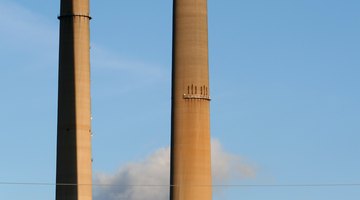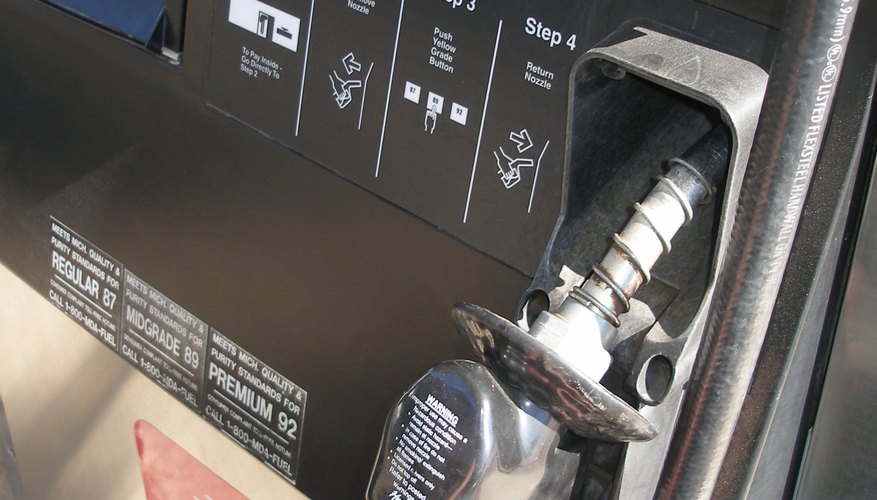Each person uses a good deal of energy in the form of fossil fuels each day. Even the smallest child has an impact on our environment. Most of the fuels used in our daily life come from non-renewable sources. Once we use these fuels, they're gone forever. Each day we bathe, cook, clean, do laundry, drive and use products created using various types of fuels. Let's look at how we use each type of fuel in our daily lives.
Gasoline
The most obvious fuel used in daily life runs our cars, school buses and trucks each day. Gasoline and diesel are non-renewable fuels created from crude oil deposits in the ground or in the ocean. We use gasoline to power lawnmowers and other maintenance equipment. Construction sites power backhoes, dump trucks, cranes and other types of equipment with diesel.
- The most obvious fuel used in daily life runs our cars, school buses and trucks each day.
- We use gasoline to power lawnmowers and other maintenance equipment.
Natural Gas
Natural gas can be used to power the heating systems, hobs, water heaters and dryers in our homes. Natural gas burns very cleanly and creates a good deal of energy when burning, according the Natural Gas.org. This type of fuel is mostly comprised of methane but can contain other gases as well. Natural gas can often be found as underground deposits near oil pockets. Oil emits gases that rise to the higher levels of underground pockets of oil trapped within rock layers. Wells tap into these pockets to remove the natural gas for use in your home.
- Natural gas can be used to power the heating systems, hobs, water heaters and dryers in our homes.
Coal

Many electrical plants burn coal as the primary fossil fuel for powering the electrical supply for homes across the country. According to the American Coal Foundation, coal-powered electricity fuels the electrical needs for more than half of all U.S. homes. Machines crumble the coal into small particles that get placed inside a furnace. The coal gets burnt to heat water that creates steam that fuels a turbine to create mechanical energy. This mechanical energy converts to electrical energy in a generator then gets transmitted through substations that deliver electricity to customers.
- Many electrical plants burn coal as the primary fossil fuel for powering the electrical supply for homes across the country.
- This mechanical energy converts to electrical energy in a generator then gets transmitted through substations that deliver electricity to customers.
Water
Water is often called the fuel of life, and for good reason. Our bodies consist of 60 per cent to 75 per cent water. We use water to bathe, wash clothes, cook and drink every day. This form of fuel also generates power for homes in areas near running streams and rivers. Dams block the water flow, creating built-up energy as the water accumulates. When the sluices release, the water flows toward a large turbine. The energy converts from mechanical to electrical energy and then is transmitted to a transformer to boost the electrical output. This renewable source of energy limits air pollution and provides about 7 per cent of U.S. electrical power, according to the U.S. Geological Survey.
- Water is often called the fuel of life, and for good reason.
- Dams block the water flow, creating built-up energy as the water accumulates.
Solar Energy
We benefit from the sun's energy every day. It heats the Earth, provides heat, fuels the water cycle that produces weather and helps plants grow. Sunlight helps our bodies generate Vitamin D to absorb calcium. Solar energy dictates our daily life patterns of rest and activity.
- We benefit from the sun's energy every day.
- Solar energy dictates our daily life patterns of rest and activity.
